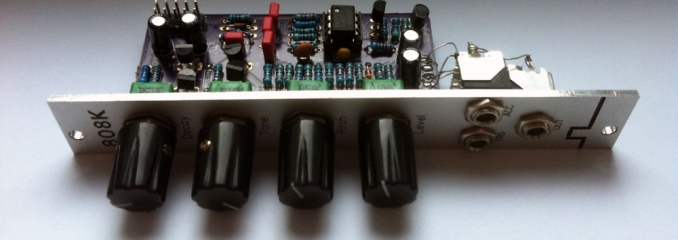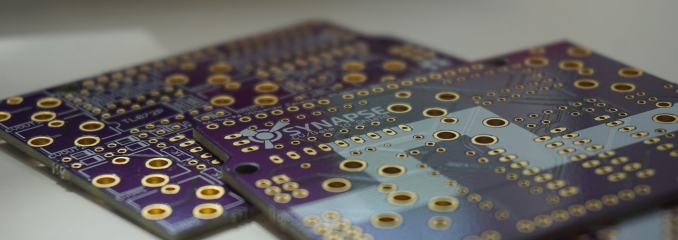808K - An eurorack version of the TR-808 kickdrum

While building this version, I also found a couple of interesting mods: a decay range extension and a "pitch" pot, which I decided to integrate into the prototype.
After some months, I started experimenting with Eagle, and created the first prototype of a PCB. Back then I didn't have a modular synthesizer (lucky times!), so I ended up using an Arduino together with an optocoupler to trigger the kickdrum via MIDI: it worked quite well, and I've been using it for a while, until I started building my first Eurorack modules.



